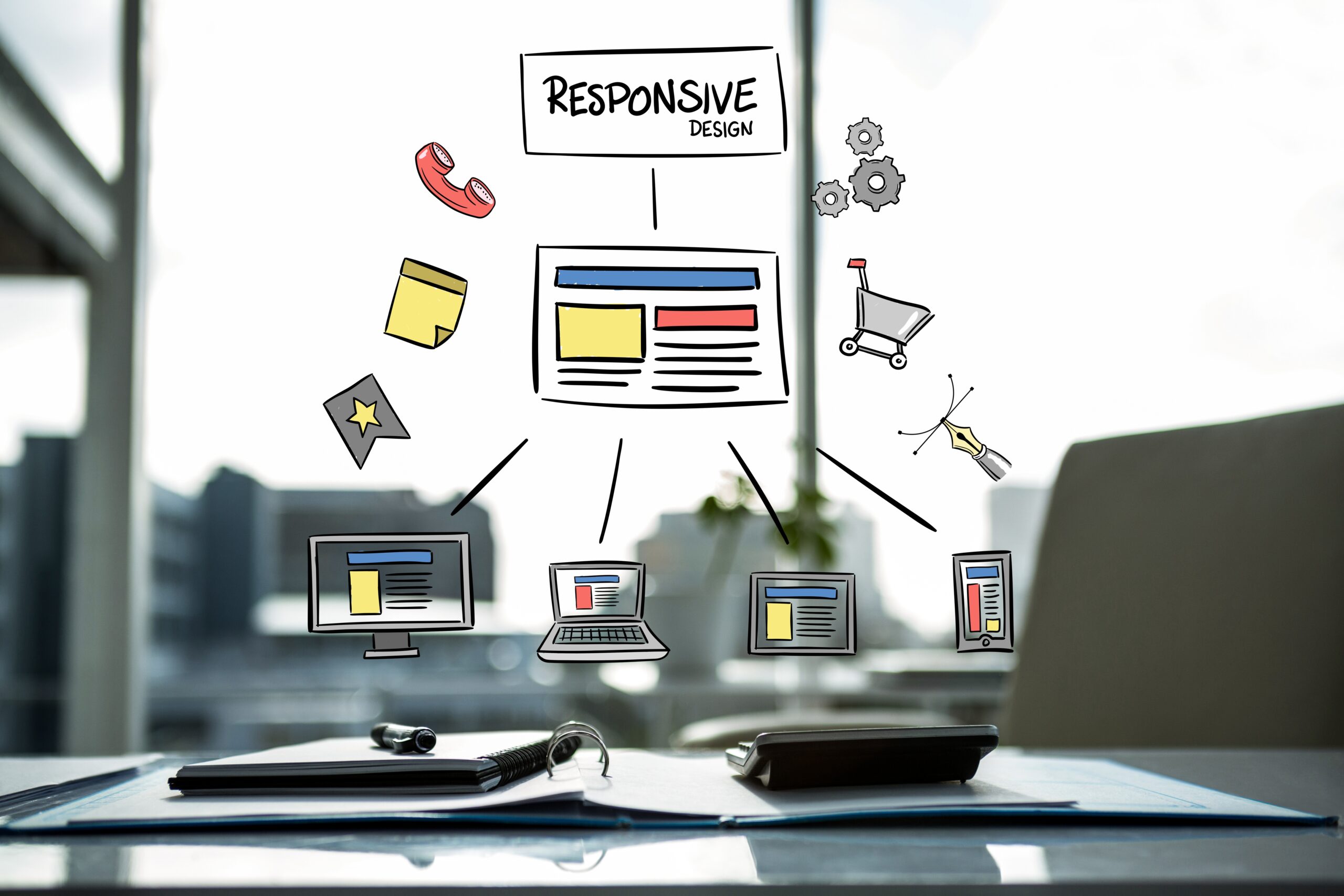In a digital-first era, standing out requires more than just an attractive layout. For your site to succeed in 2025, it must be optimized for search engines. The key to online growth lies in blending smart design with effective SEO strategies.
Whether you’re a business owner looking to revamp your online presence or a web design company aiming to deliver real results, understanding the role of SEO in web design is no longer optional — it’s essential.
Let’s explore how SEO and design go hand-in-hand and the best practices every modern website should follow.
Why SEO Matters in Web Design
It’s a common misconception that SEO and web design are separate entities. In reality, they’re deeply interconnected. A stunning website that doesn’t rank on Google is like it doesn’t even exist.. And a highly optimized site that’s visually unappealing won’t convert visitors into customers.
A balanced combination of web design and development ensures that your website is:
- Easily found on search engines
- User-friendly for your target audience
- Optimized for conversions, turning clicks into clients
In a nutshell, having an SEO-friendly design helps attract visitors, while a well-crafted design ensures they stay engaged.
Key SEO Elements That Influence Web Design
When designing a website, there are several SEO fundamentals that web designers need to consider:
1. Mobile-First Design
With over 60% of web traffic now coming from mobile devices, Google has officially adopted mobile-first indexing. This means that your mobile version is what search engines look at first.
Best practice: Ensure responsive design across all devices. A good web design company prioritizes mobile usability without compromising visual appeal.
2. Website Speed and Performance
A slow website can hurt both user experience and search rankings. In 2025, Google continues to prioritize Core Web Vitals — metrics like page load speed, interactivity, and visual stability.
Tips:
- Optimize images and videos
- Minimize the use of heavy scripts
- Use a reliable hosting provider
Faster websites lead to better SEO performance and lower bounce rates.
3. Clean and SEO-Friendly Code
The way your site is built matters. Clean code not only enhances speed but also helps search engines crawl and index your content effectively.
What to look for:
- Use semantic HTML tags (<header>, <nav>, <main>, etc.)
- Proper heading hierarchy (H1 to H6)
- Alt tags on images for accessibility and SEO
Great web design services always factor in SEO-friendly development practices from the ground up.
4. URL Structure and Site Architecture
Your website’s layout needs to be logical, user-friendly, and easy to navigate for everyone, including search engines.
Checklist:
- Use clear, keyword-rich URLs (e.g., /web-design-services instead of /page123)
- Implement a silo structure with internal linking
- Create an XML sitemap and robots.txt file
This helps search engines better interpret and index your content efficiently.
5. Optimized Content Layout
Design should enhance the content — not overshadow it. Structured content that’s easy to read and engaging improves SEO metrics like time on page and dwell time.
Design tips:
- Use short paragraphs, bullet points, and subheadings
- Incorporate calls to action (CTAs) naturally
- Make sure content is above the fold and accessible
Your design should highlight your content’s value, especially when offering niche web design services.
Best Practices for SEO-Driven Web Design in 2025
Let’s dive deeper into actionable practices to future-proof your website this year:
1. Integrate SEO from the Start
Many businesses make the mistake of adding SEO after the site is built. This often leads to expensive redesigns or underperforming websites.
Instead, web design and development teams should collaborate with SEO experts from day one. Together, they can plan a strategy that aligns user experience with search engine guidelines.
2. Focus on User Intent
Google’s algorithms are smarter than ever. Search engines are no longer just scanning for keywords — they’re now focused on understanding the intent behind each search.
Ask yourself:
- What is the user looking for when they search for “web design company near me”?
- Are you addressing their problems directly?
- Does your content offer value?
This approach helps you rank better and build trust with your audience.
3. Design for Accessibility
Accessibility is not only a key ranking factor but also a legal requirement in many regions. More importantly, it ensures your website is inclusive and usable for all users, including those with disabilities.
Quick wins:
- Add alt text for images
- Use high-contrast colors
- Make navigation keyboard-friendly
A responsible web design company designs with inclusivity in mind.
4. Leverage Schema Markup
Schema markup (structured data) allows search engines to better understand the context and meaning of your content. This can boost your chances of appearing in rich results like featured snippets or FAQs.
Common types of schema for web design websites:
- LocalBusiness
- Services
- Product
- FAQ
Incorporating schema elevates your visibility in AI-driven search results.
5. Optimize for Voice and Conversational Search
With the rise of voice assistants and generative AI tools, users now search differently. Instead of typing “web design services Delhi,” they might ask, “What’s the best web design company in Delhi for small businesses?”
To prepare:
- Use natural language in your content
- Answer common questions directly
- Include long-tail keywords and FAQs
Voice search optimization is the next step in SEO evolution — and design plays a key role in presenting answers clearly.
Choosing the Right Web Design Company That Understands SEO
Your website is your digital storefront — it should be discoverable, intuitive, and conversion-friendly.
At Cserve Technologies, we don’t just create websites — we create online experiences that are engineered for visibility and performance. Our team of expert web designers combines creative design with cutting-edge SEO strategies to build websites that rank, engage, and convert.
When you choose us, you’re choosing:
- Custom web design services tailored to your brand
- SEO-first design and development approach
- Fast, mobile-responsive, and accessible websites
- Scalable architecture with future growth in mind
Final Thoughts: Design and SEO Are No Longer Separate Worlds
In 2025, the success of your website depends on the perfect blend of form and function. Good design gets you noticed. Smart SEO gets you found. Together, they help you grow.
So, whether you’re building a new site or revamping an old one, always prioritize SEO from the foundation. Work with a web design company that understands this synergy and can help you build a digital presence that works — not just looks good.
Ready to take your online presence to the next level? Let’s build something that both Google and your customers will love.
Contact Cserve Technologies today for SEO-powered web design and development services that deliver real results.
Frequently Asked Questions:
1. Why is SEO important in web design?
SEO is essential in web design because it ensures your website is both visually appealing and search-engine-friendly. A well-optimized design improves page load speed, mobile responsiveness, and user experience—all of which help boost your site’s visibility and ranking on Google.
2. How does web design affect SEO performance?
Web design impacts SEO through factors like site structure, navigation, image optimization, and coding practices. A poorly designed website can lead to slow load times and higher bounce rates, while an SEO-focused design enhances user engagement and helps search engines crawl your pages efficiently.
3. What are the best SEO practices to follow in web design for 2025?
Key SEO practices in 2025 include mobile-first design, fast-loading pages, structured data (Schema markup), accessible content, voice-search optimization, and secure HTTPS protocols. These help improve both user experience and search rankings.
4. Should I hire a web design company that understands SEO?
Yes, hiring a web design company with SEO expertise ensures your site is built with both aesthetics and performance in mind. SEO-friendly web designers focus on creating responsive layouts, clean code, and optimized content that support long-term visibility and conversions.
5. How can I make my website SEO-friendly after it’s already designed?
If your website is already live, you can still improve SEO by optimizing on-page elements (titles, meta descriptions, and headings), improving internal linking, compressing images, fixing broken links, and ensuring mobile responsiveness. Partnering with a web design and development team experienced in SEO can help implement these updates effectively.











